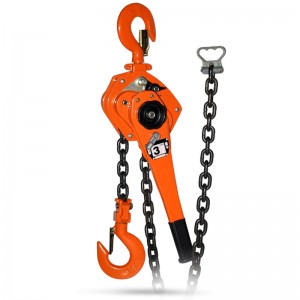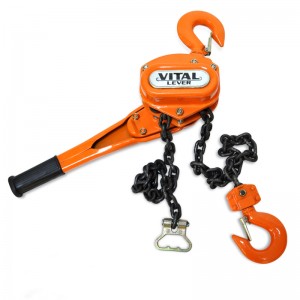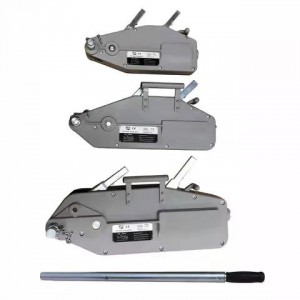The lever hoist is a manual lifting tool that is easy to use and easy to carry. The hand hoist can be used for raising, pulling, lowering, calibrating and other operations. The lifting capacity generally does not exceed 50T.
The lever hoist has the characteristics of safety, reliability, durability; good performance, simple repair; small size, light weight, easy to carry; small hand force, high efficiency; perfect structure, beautiful appearance and so on. Manpower is used to lift heavy objects, and the operating handle shall not be arbitrarily lengthened; during operation, other handles shall be allowed to move freely without jamming.
(1)Operation and maintenance methods of hand lever hoist
1. After the hand hoist is used, the hoist should be cleaned, coated with anti-rust grease, and stored in a dry place;
2. The maintenance and maintenance should be carried out by the organizer who understands the lever hoist, so as to avoid random disassembly and assembly by those who do not understand the function principle of the machine;
3. The gear equipment is operated according to the drawings;
4. When installing the slotted nut, turn the handwheel clockwise first, so that the ratchet and the friction plate are pressed tightly on the brake air seat, and then install the slotted nut;
5. After the hand hoist has been cleaned, inspected and overhauled, no-load and heavy-load tests should be carried out to confirm that it works normally, automatically and reliably before it can be put into use. The friction surface of the brake must be kept clean to avoid sludge and sewage pollution.
(2)Inspection method
1. No-load test: When there is no load, move the travel rod and reverse rod back and forth three times to check the working conditions of the mechanism, and there should be no jamming;
2. Additional load test: tested on a special test bench, the pull force and the reciprocating stroke of the wire rope by the handle should meet the requirements of the specification;
3. Dynamic load test: test on a special test bench, load with an additional load of 1.1 times, rise and fall once each time, the distance between each wire rope movement should not be less than 200mm, the whole machine should work smoothly and reliably;
4. Static load test: On a special test bench, gradually load to 1.5 times the rated load, and stay for 10 minutes. The clips and clamping plates must not have permanent deformation that affects the use of functions.
Post time: Jan-13-2023







